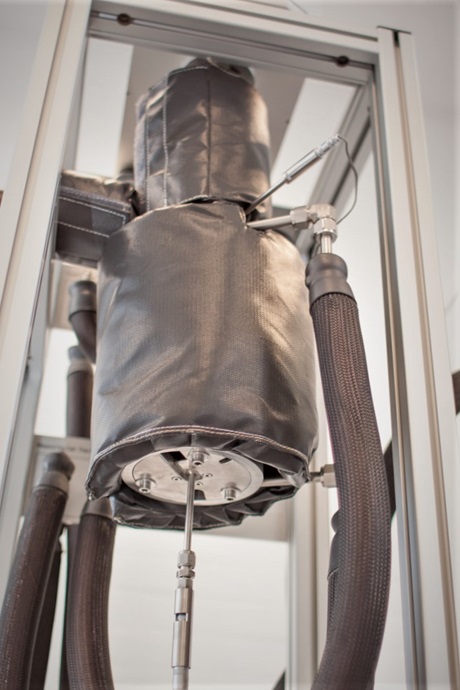Magnetic suspension balances (MSB) is a gravimetric device which makes it possible to weigh samples contactlessly under nearly all environments.
Detailed description
Instead of hanging directly at the balance the sample to be investigated is linked to a so-called suspension magnet which consists of a permanent magnet, a sensor core and a device for decoupling the measuring load (sample).
An electromagnet, which is attached to the underfloor weighing hook of a balance, maintains a freely suspended state of the suspension magnet via an electronic control unit.
Using this magnetic suspension coupling the measuring force is transmitted contactlessly from the measuring chamber to the microbalance, which is located outside the chamber under ambient atmospheric conditions.
A controlled suspended state is achieved by means of a direct analogous control circle (PID controller and position transducer). This modulates the voltage on the electromagnet in such a way that the suspension magnet is held constantly in a vertical position.

A microcontroller driven digital set point controller superimposed to the direct PID controller allows various positions of the suspension magnet to be set up.
The distinct merit of the Rubotherm Magnetic suspension balances (Rubotherm Präzisionsmeβtechnik GmbH, Germany) is that the microbalance can be tared and calibrated during measurements. This zero-point correction and calibration of sensitivity of the microbalance is important for measuring the gas solubilities accurately, because long sorption times are generally needed.
The MSB offers the possibility of lowering the suspension magnet in a controlled way to a second stationary position, a few millimeters below the measuring position. At this position, a sample basket is set down on a support by the suspension magnet’s descent, and the sample is decoupled from the balance.
This so-called ‘zero-point position’ allows a taring and calibration of the balance at any time, even while recording measurements.
Publications
Paul, Subham; Thomsen, Kaj, “Kinetics of absorption of carbon dioxide into aqueous potassium salt of proline,” International Journal of Greenhouse Gas Control 8, 169-179 (2012)